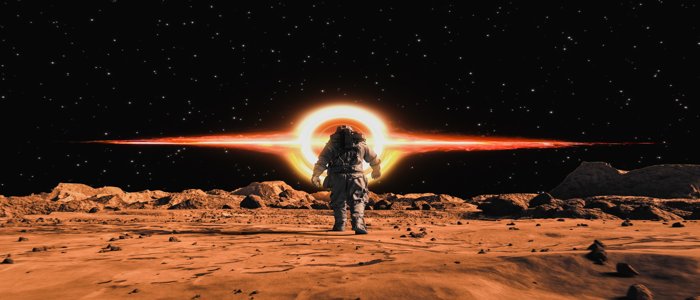The Mysterious Truth of Mars, Which You Were Unaware of
Introduction
Mars has always been a center of attraction for scientists and space lovers. It is known as the Red Planet and is one of the most mysterious planets in the solar system. But do you know that there are many hidden mysteries related to Mars that most people do not know about? Come, let us introduce you to some amazing and unheard information about Mars.
Was there ever life on Mars?
The Planet had more warmer climate earlier that perhaps supported life too. It got stripped off possibly due to its weak magnetic field therefore it got cooled, dried and no longer contains liquid water on its surface. Scientists believe that water flowed on Mars millions of years ago, and there was also a possibility of life there. NASA Mars rovers have discovered minerals on the surface of Mars Planet, which indicate that there used to be lakes and rivers there. Can microbes still exist on Mars? This remains a mystery! Although this data has been collected by several space missions held under NASA, ISRO, ESA and took so many experiments to understand and investigate the environment on Mars.
Mysterious surface of Mars
Olympus Mons, the largest volcano in the solar system, exists on the surface of Mars, which is about three times higher than Everest! It is built of lava which has flowed over billions of years and according to scientists, it can still be an active one. It is named after Mount Olympus, the tallest mountain in Greece. Apart from this, there is a valley called Valles Marineris, which is many times larger and deeper than the Grand Canyon of the Earth. It is also the largest canyon in our solar system. Scientists are still studying this mysterious topography.
Strange weather on Mars
The weather on Mars is very different from Earth. There are terrible sandstorms and dust devils which can cover the entire planet for months. These storms can even cover equipment and spacecraft under the dust. These storms were so powerful that some of NASA's rovers had to be shut down. Also, Mars has an extremely cold atmosphere, where the temperature can drop to -140 ° C!
Apart from this, the dust devils are large columns or vortices formed because of the rotation of warm air. Seasonal clouds develop around mountains such as Olympus Mons, Arsia Mons, Ascreaus Mons, Alba Patera, and Pavonis Mons in spring and summer. Other phenomena include avalanches and icy explosions. The southern hemisphere has its own respective weather activities, again exhibiting the different weather patterns existing on Mars.
The mystery of the sound and wind of Mars
The strange sounds of Mars emanate from a thin atmosphere, quieter and deeper-toned than sounds on Earth. The atmosphere is 100 times less dense than that of Earth, and sound waves travel slower and attenuate more rapidly. Certain higher frequencies of sound die away totally if not closely connected to their source while those that can be detected include the second category of deeper frequencies. Various kinds of pressure changes on Mars throughout the Martian seasons cause it, at certain times of the year, to be noisier than in others. NASA's Perseverance rover has picked up on pressure changes due to atmospheric turbulence on Mars, as well as sounds coming from dust devils. Being on Mars would mean one would have to be very close to the source of the sound in an atmosphere-pressurized suit to protect the ears from low pressure.
NASA's Perseverance rover recorded sound for the first time on Mars, which revealed that the wind there is slower and more mysterious than on Earth. The thin atmospheric layer there affects sound waves differently, which will make it difficult for humans to hear the sounds there.
Can a human colony be settled on Mars?
Human colonization of Mars may someday be possible, though there are lots of challenges involved-Mars isn't feasible due to the costs involved, a lack of resources, some technical issues, radiation, poisonous dust, and extreme temperature swings. The Outer Space Treaty prevents national appropriation of celestial bodies like Mars, so some think that globally provisioning food and readiness for pandemic threats is where it's at rather than diverting money into a Martian colony. Solutions on the seam include reframed affordable houses from local material, solar energy, prepositioning assets to Mars, and autonomous production of propellant. In the end, some factors make Mars' future ambiguous.
Organizations like Elon Musk and NASA dream of making Mars habitable for humans. But the low gravity, toxic dust and lack of water there can be a big challenge for humans. Nevertheless, plans are being made to establish the first human colony on Mars by 2050.
How many missions have been sent to Mars so far?
So far, the US, Russia, China, India and European space agencies have sent several missions to understand Mars. NASA's Perseverance rover, Curiosity rover and InSight lander are currently studying the surface of Mars. China's Tianwen-1 mission, which also included a rover Zhurong, has successfully landed on Mars. India's Mangalyaan, which was launched in 2013, also provided important data. The European Space Agency's ExoMars mission is also engaged in exploring the Red Planet. In the coming years, NASA, ISRO, SpaceX and other agencies are planning to launch many new missions to unravel the mysteries of Mars.
The Bottom Line
Mars hides countless mysteries within itself, which can be revealed in the future. Was this planet once full of life? Can humans live here in the future? All this still remains a deep mystery.
For more content like this explore Discover Recent Scientific Innovations and News Updates on Polskienews. We bring every news and update from all over the Poland. Check out our website to stay ahead and updated.
By Priya Rana |









